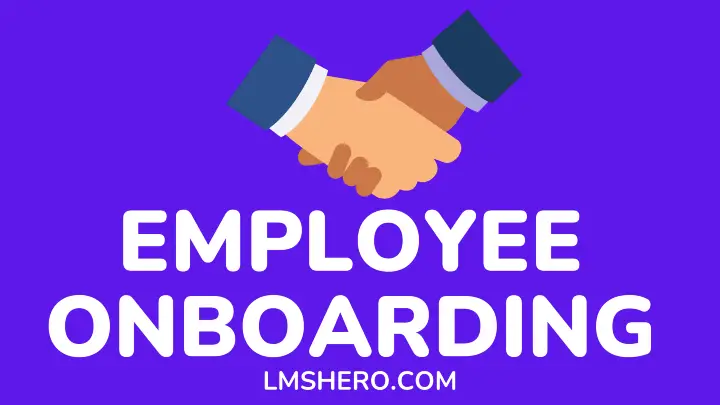Onboarding new employees is as important as the job itself. Organizations that take employee onboarding seriously can set new hires up for productivity on the job.
After going through a series of recruitment exercises and finally landing the job, new hires are usually enthusiastic and ready to impress employers.
But a poor onboarding process can leave them clueless about their job function.
Worse, they may quit for a lack of productivity and career development. Therefore, organizations must consider building a robust employee onboarding system from day one to enable new hires to do their jobs effectively and independently.
From providing the necessary paperwork to office setup to briefing employees on their job functions to employee training, companies should have systems to ensure new hires quickly settle into the job and adapt to the organization’s work culture.
This article gives you insight into the meaning, steps, examples, and best practices of employee onboarding. Let’s dive in.
What is employee onboarding?
Employee onboarding is the strategic process of introducing new employees into an organization.
It helps these new employees understand the company’s work culture and provides tools and information that make them proficient at their jobs.
It involves orienting new employees on their job functions, including the organization’s mission, vision, policies, benefits, and values.
However, it doesn’t end there, continuous employee training is also an integral aspect of employee onboarding.
That is why a proper employee onboarding process is suggested to last up to a year because it is the secret to building a formidable team and ensuring that employees are productive.
Phases of onboarding employee
As aforementioned, adopting the right onboarding strategy is key to the success of new hires in an organization.
Moreover, understanding the phases of employee onboarding will help you create the right strategy for engaging new hires and helping them acclimatize to company practices.
They include:
1. Pre-onboarding
The pre-onboarding stage begins immediately after an applicant accepts your offer for employment in the organization before even resuming work in the office.
This is the best time to lay the groundwork, so new employees know what lies ahead.
This stage can also determine an employee’s perception of your organization in the future.
Hence, what HR managers should do here is to help new hires understand the company’s structure and work process before they resume physically.
To make things easy, organizations should employ new hires to go through the company’s website, where they can read the company’s profile and understand its vision and mission.
Furthermore, building an employee portal to access the employee handbook and understand company policies and values goes a long way in preparing new hires for work.
HR may also use live meeting applications like skype, zoom, or Google meet to engage new hires, talk to them about what to expect, and make them feel welcomed and appreciated.
All paperwork should be dealt with at this stage. Also, this is the time to prove that your organization is result-oriented and employee-oriented.
Therefore, asking relevant questions about their location, by what means they’d get to work, and offering help if needed ensures that new hires are getting into the right company.
2. Orientation
Orientation is expected between the first day of resumption and the end of the first week. However, the first day at work matters a lot.
Having done an excellent job in the pre-onboarding stage, new hires are usually unsure of what to expect in the office when they resume physically.
They do not know who to talk to or where to go. Hence, it is best to have everything in place before their arrival.
Pre-inform employees about the new hire and prepare their office space. You don’t want to seem like you’re not ready for them to avoid giving them a negative impression of the organization.
Furthermore, the first-day experience shouldn’t be all about work. You can throw a short mini-introduction party with cakes and drinks to welcome them.
Welcome the new staff and make them feel at home. Also, it is an excellent opportunity to meet each member of the organization and their roles.
After that, HR managers can talk to them about their job functions and what is expected of them.
Discuss salary structure, leave policy, compensation plan, and meeting schedule (weekly, monthly, quarterly, annually), and hand over relevant work documents.
Then, you can take them on a tour around the company while still introducing them to other employees.
Many organizations fail, however, because they think orientation is all there is to onboard new employees. It is only a tiny bit of what guarantees talent retention in the organization.
That said, let’s consider the next phase of employee onboarding.
3. The first one to three months
Most employees decide to stay or leave an organization within the first 90 days.
Employers that understand this keep an open communication system, plan employee training and mentorship programs and foster a work environment that keeps employees engaged.
Furthermore, employers can know if the onboarding process is effective by assessing employees’ performance and satisfaction during the first few months.
This way, they can improve strategies if they are not meeting standards.
4. The first three to six months
At this level, employees are expected to have gained competence in their job to the point where they barely need supervision. They ought to have acclimated to the company’s culture and practices.
Checking to see if the organization is fostering a continuous learning culture, career development, and innovation of the employee is crucial within these periods.
5. The first year
If employees are satisfied and happy in the first year, it is proof that the onboarding process was successful.
Moreso, the first year sets them up for the level of productivity they will give organizations in subsequent years.
At this point, managers should evaluate employees’ achievements while working for the organization, appreciate their effort, give feedback on what to do better, and create a system that encourages corporate learning culture.
Furthermore, give them a chance to speak about how they feel after their first year of working and ask them for suggestions on what they think can improve the onboarding process.
Best practices for onboarding employees
Here are a few practical tips that can help better your onboarding process:
1. Automate your onboarding process as much as you can
Technology has made things easy. So one of the best things you can do for your organization as an HR manager is to suggest technological solutions for onboarding new employees.
Instead of using hard copy paperwork, the organization can have a soft copy for all their documents.
There are many applications available online with which individuals can sign documents today. So new hires can sign these documents in soft copy and send them to the office.
This saves money and, at the same time, keeps important files safe. Moreso, for organizations with multiple departments and staff, using hard copy paperwork would be quite difficult to manage.
Also, now that many jobs are remote, organizations need to adopt technology to foster the onboarding process.
2. Personalize the onboarding process
While it is great to have a template to follow for onboarding, it is crucial to be flexible with onboarding activities depending on the employee.
Some parts of the onboarding process are statutory, but employee training and mentorship programs can be flexible.
For instance, a newly hired manager is not expected to go through some type of training anymore because they are believed to already have a high level of experience.
3. Use an onboarding checklist
A checklist is like a template of activities that guides your onboarding process. Having a checklist at your fingertips helps you know what to do through every stage of the onboarding process.
So, when you hire, you will not have to stress about what to do. You’d be able to keep track of your activities as your go along by simply ticking those things you’ve achieved.
FAQs
Why is employee onboarding important?
It is important to help employees gain a proper understanding of their job function, acclimatize to the work culture, adapt quickly to their job, and improve their performance on their job.
What are the consequences of bad employee onboarding?
Employees may not properly understand their job roles if the organization’s onboarding process is poor.
Moreover, it gives the employee a bad perception of the organization and leads to workers’ dissatisfaction.
Why does employee onboarding fail?
Employee onboarding may fail due to information overload. Hence, taking employees through onboarding activities in steps within a reasonable time frame is crucial.
What are examples of employee onboarding?
Some examples include introducing new hires to colleagues, updating them on their job roles, signing paperwork, taking them around the office, welcoming them with a mini-party, etc.
Conclusion
Employee onboarding is the first step toward successful talent management. Human resources managers who understand this can drive employee satisfaction on the job from the get-go
Additionally, it increases employees’ trust in the organization and improves overall performance and productivity, which translates into better employee retention.
Furthermore, adopting technology in onboarding, establishing corporate learning work culture, and driving employees’ idea initiation and exploitation solidify their satisfaction.
Finally, check the article on areas of improvement for a manager if you’re looking to advance your career.
I hope you got value. Thanks for reading.







